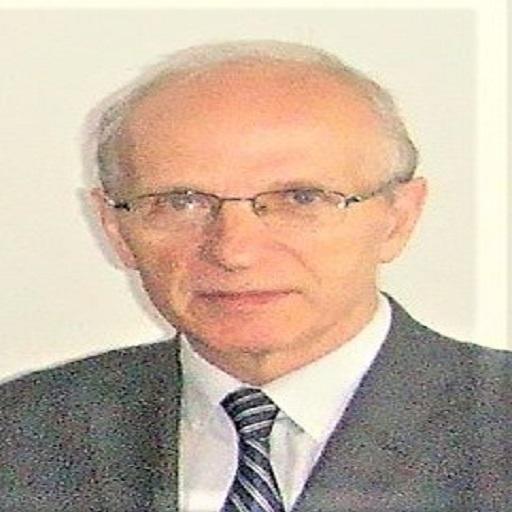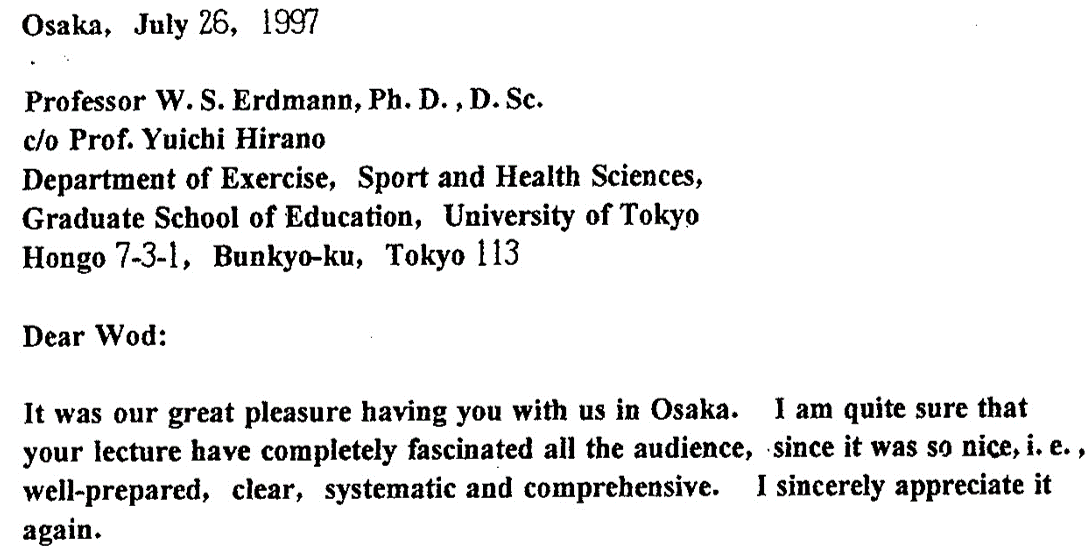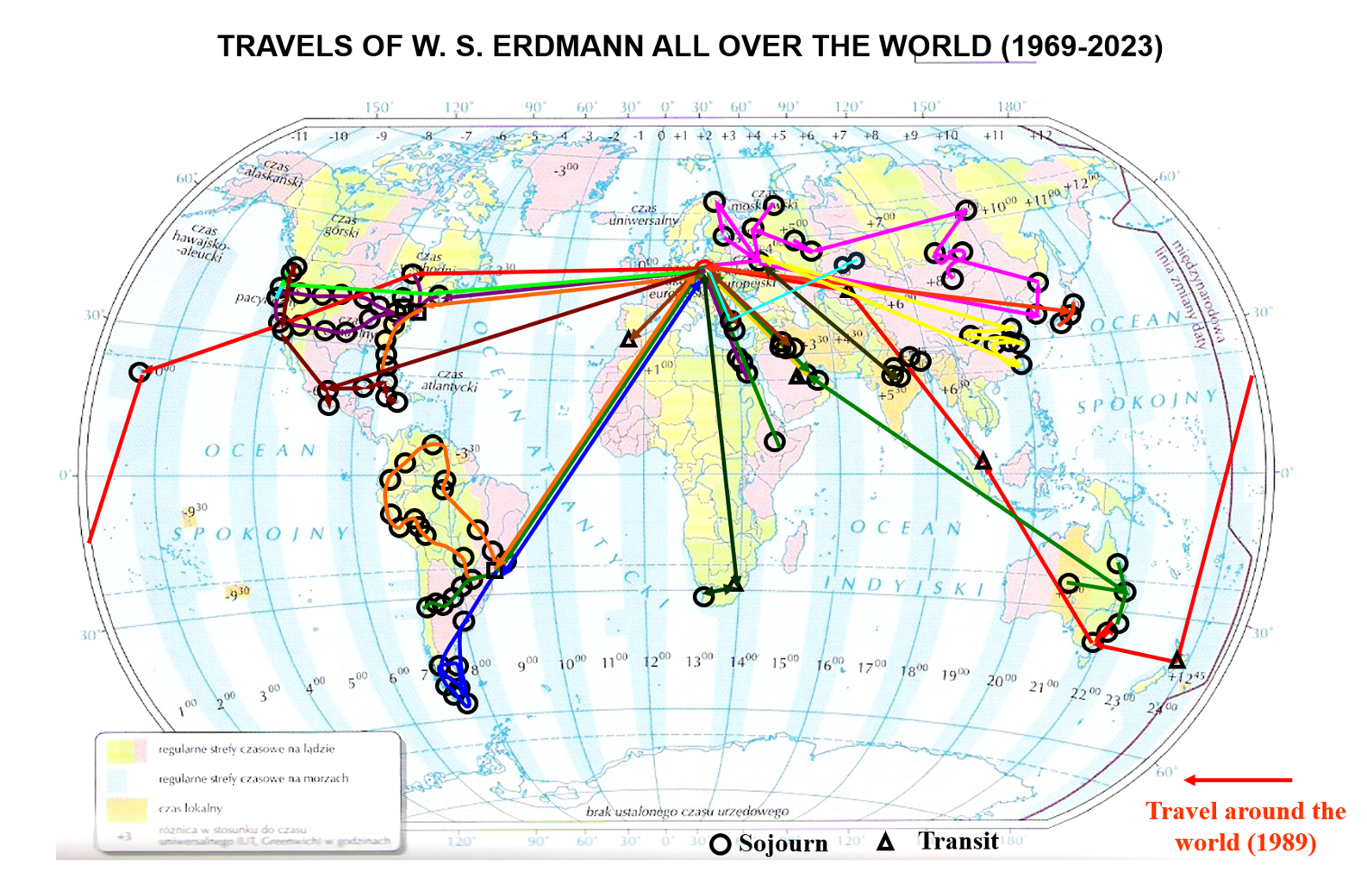
Prof. W. S. Erdmann
Gdansk University of Technology, Poland
Title: Quantitative data of sport games’ tactics: examples of handball and football
Abstarct: For many years researchers, coaches, analysts used paper sheets with printed pitch or court lines in order to draw positions of players during a match. Film camera was used to record position of one player for short part of the match. When video technology appeared camera was situated at far distance from the court or pitch and on elevated level. In addition camera was equipped with wide angle lens. This gave the whole sport arena in the camera’s viewfinder. At first the match was played back and transparent foil was put on the television set’s screen. The position of each player was drawn on separate foils. Foils were changed at every 30 s. Next, using a scanner all drawn lines were transferred to the computer where displacement of players was calculated. Further more the whole match was transferred to the computer. An operator followed with the cursor after the chosen player (22 players for one match). Special software allowed calculation of the distance covered and velocity and acceleration obtained. Also kinematic data of formation and of the whole team were obtained. The mean position of the team on the pitch allowed to decide whether the team was offensive or defensive. The current best technology uses: a) one camera with wide angle lens and computerization where the software recognizes players and their movement; b) performance tracking wearables such as global navigation satellite system’s trackers. During the match the most important fragments are where the winning teams tend to cover more distance sprinting (for example during counterattacking) than their opponents. In addition, the vast majority of goals are preceded by at least one powerful action of the scoring or the assisting player.
Bio:
1. EDUCATIONAL BACKGROUND
1) Poznan University of Physical Education, Poznan, Poland, EU, major: “Physical education” – MS
2) Poznan University of Physical Education, Poznan, Poland, EU, major: “Physical culture” – PhD
3) Gdansk University of Technology, Gdansk, Poland, EU, major: “mechanics” – complementary studies
4) Wroclaw University of Physical Education, Wroclaw, Poland, EU, major: “Physical culture; biomechanics of sport” – DSc
5) Gdansk University of Physical Education and Sport, Gdansk, Poland, EU, Instructor of Rowing
2. SCIENTIFIC AREAS OF INTEREST
My scientific areas are:
1) Biomechanics, especially: universal biomechanics, biomechanics of sport, human body build (geometry, inertia), muscle mechanics, static equilibrium, locomotion
2) Exercise and Sport Science; Training and Competitions; Testing & Prescriptions; Systematics of Sports – 370 items in 8 groups
3) Kinesiology, especially: individual movement (in joints, in different environment), locomotion without and with transport devices
4) Health, especially: proper diet, body movement, healthy environment
5) Tourism, especially world tourism: tourist geography, tourist travel, tourist attractions
6) Research Methodology, especially in Natural Sciences and Exercises and Sports
Above interests are applied in:
1) Physical Culture, especially in: physical education, sport, tourism, recreation, rehabilitation/physiotherapy
2) Engineering, especially in: sport, recreation, transport, rehabilitation, cybernetics, metrology
3) Ergonomics, especially in: body loads, communication,
4) Law, especially: accident analyses, court opinions (expertise)
3. EMPLOYMENT
1) Long term employment: Gdansk University of Physical Education and Sport in Gdansk, Poland, EU at the Dept. of Biomechanics and Sport Engineering – from assistantship up to full professor, Vice-Rector (Vice-President) for Students and Sport, University Publishing House – Director
2) Long term employment parallel with point 1: Higher School of Physical Education and Tourism, Sopot, Poland, EU (private, do not exist anymore) full professor, Rector (President)
3) Parallel employment with point 1: Gdansk Technical University, Gdansk, Poland, EU – full professor at the Chair of Biomedical Engineering
4) Centre of Locomotion Research in Gdansk – Director
5) Actual employment (part time): Academy of Tourism and Hotel Management, Gdansk, Poland, EU – full professor, Rector (President) up to 2023.
6) The Pennsylvania State University, University Park, Penn, USA – Research Associate 1981
7) Columbia University, New York, N.Y., USA – Research Associate 1982
8) Footscray Institute of Technology (currently: Victoria University), Melbourne, Vic. Australia – Research Associate 1989
9) University of Tokyo, Tokyo, Japan – Visiting Professorship 1997
10) University of São Paulo, SP, Brazil – Visiting Professorship 2009
11) Margulan University, Pavlodar, Kazakhstan – Visiting Professorship 2023
4. SCIENTIFIC ACTIVITY
4.1. Proceedings
I participated in about 120 scientific meetings in many countries. I was chairman of organizing and scientific committees of five conferences. In some of them I presented two presentations, so altogether there are about 150 presentations. Almost all appeared within the conference proceedings on: biomechanics, sport, anthropology, ergonomics, tourism. I am editor of 6 proceedings, member of scientific boards, chairman of scientific sessions, presenter of plenary lectures.
4.2. Journals
The most important articles were published in: Journal of Biomechanics (four article in the most important journal in my branch), Human Movement Science, Acta of Bioengineering and Biomechanics, Physical Culture, Competitive Sport, Physical Education and Sport, Baltic Journal of Health and Physical Activity, International Journal of Advanced Robotics Systems, Research Journal of Physical Education Science, International Journal of Engineering Research & Applications, Acta Physica Polonica. I was a member of Editorial Boards of three journals.
I was reviewer of about 60 articles, including in the journals with IF.
4.3. Tutoring
Tutor of:
1) Five DSc scientists
2) One postdoctoral student
3) Twenty PhD students (twelve after defense)
4) About 40 MS students
5) About 30 Licencee students
Referee of several DSc, PhD, MS theses.
4.4. Scientific recognition
The editors of a monograph Routledge Handbook of Biomechanics and Human Movement Science where I have a chapter, wrote: “the authors of chapters are leading world biomechanists”.
I have obtained a letter from prof. Masahiro Kaneko, Japan Society of Biomechanics President

Fig. 3. Fragment of a letter from prof. Masahiro Kaneko, Osaka University of Health and Sport Sciences, Osaka, Japan.
4.5. Membership in the Polish and international scientific societies
1) Polish Academy of Sciences, Committee for Mechanics, Biomechanics Section – member
2) Polish Society of Anthropology – member
3) Polish Society of Biomechanics – secretary
4) Polish Society of Cybernetics – member
5) Polish Scientific Society of Physical Culture – member
6) New York Academy of Sciences – member
7) International Society of Biomechanics – member
8) International Society of Biomechanics of Sports – member of the Board
4.6. World travels
I visited several times all inhabited continents:

Fig. 4. World’s travels.
I paid study visits to about 100 academic institutions, including Massachusetts Institute of Technology, Harvard University, University of California, Stanford University.
